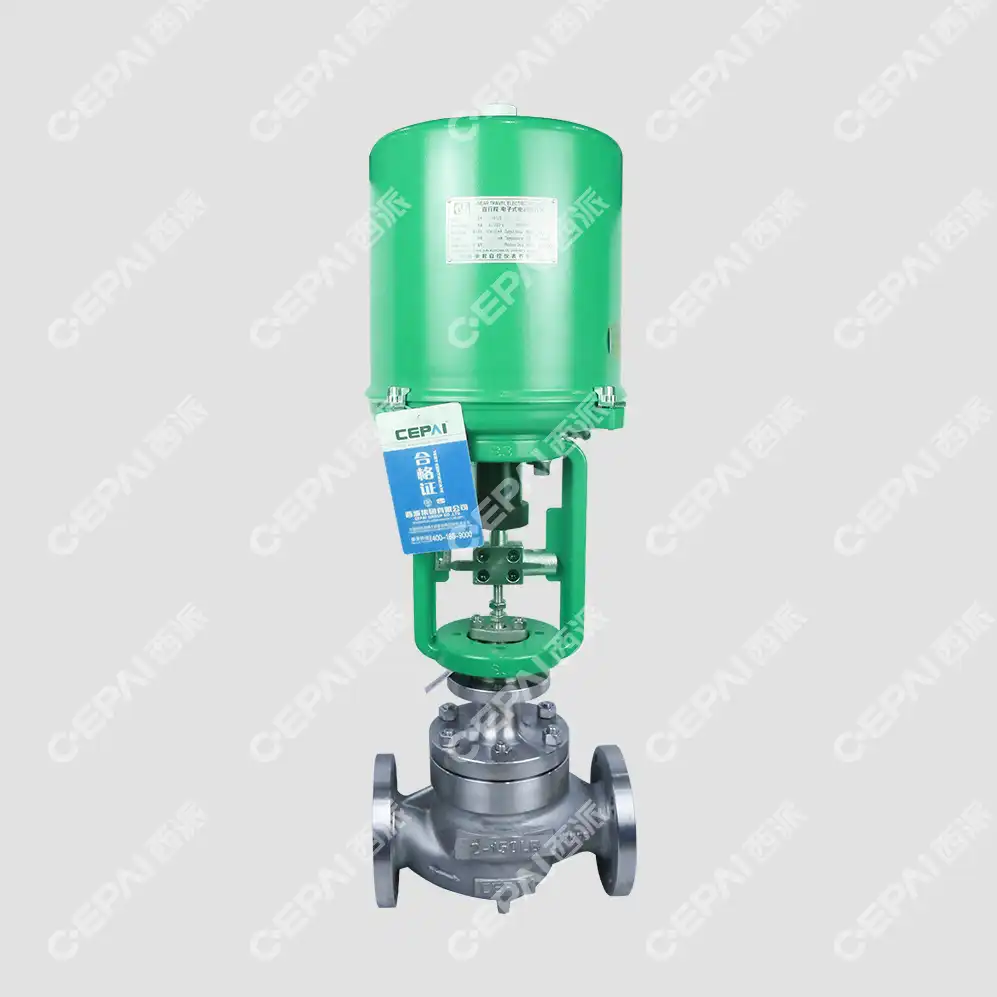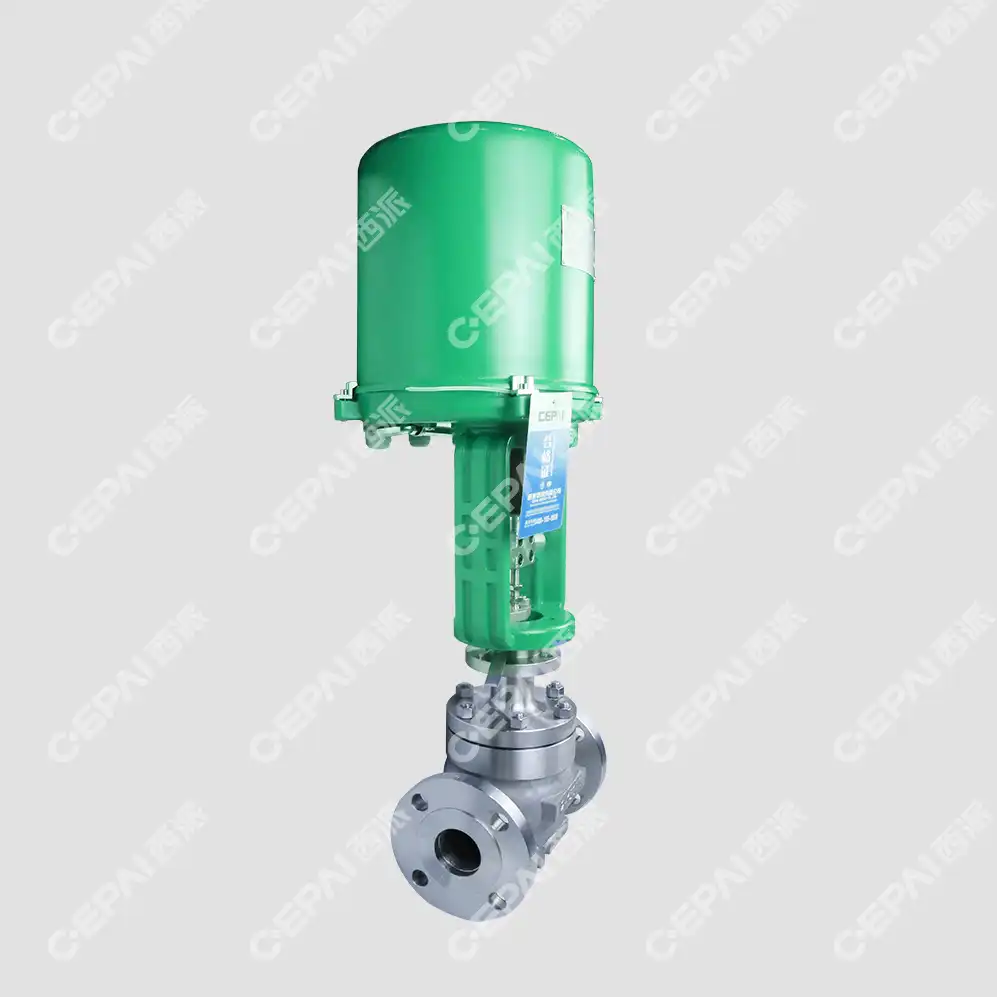Expert Maintenance Tips for Long-Lasting Control Valves
Control valves are the unsung heroes of industrial automation, quietly regulating fluid flow, pressure, and temperature across countless applications. These critical components require meticulous care to maintain optimal performance and extend operational lifespan. Proper maintenance practices not only prevent costly downtime but also ensure system reliability and safety. This comprehensive guide explores proven strategies that maintenance professionals use to maximize control valve longevity, covering essential inspection protocols, preventive maintenance schedules, and troubleshooting techniques. Understanding these expert maintenance approaches will help you protect your investment while maintaining peak system performance for years to come.
Essential Preventive Maintenance Strategies
Regular Visual Inspections and System Monitoring
Effective control valve maintenance begins with systematic visual inspections that can identify potential issues before they escalate into costly failures. Experienced technicians recommend conducting weekly visual assessments of all accessible control valve components, including actuators, positioners, and connecting instrumentation. During these inspections, look for signs of external corrosion, unusual vibrations, or abnormal noise patterns that might indicate internal wear or misalignment. Pay particular attention to packing glands, where leakage often first appears as small droplets or staining around the stem area. Control valve stems should move smoothly without binding or excessive play, and any irregular movement patterns should be documented and investigated promptly. Additionally, monitor the control valve's response time and accuracy by comparing actual position feedback with commanded positions, as sluggish or erratic responses often indicate impending component failure.

Lubrication and Cleaning Protocols
Proper lubrication represents one of the most critical aspects of control valve maintenance, directly impacting both performance and longevity. Different control valve designs require specific lubricants and application schedules, making it essential to follow manufacturer recommendations precisely. For pneumatic actuators, ensure that air supply systems maintain proper moisture levels and filtration to prevent corrosion and contamination of internal components. Clean compressed air extends actuator life significantly while maintaining consistent performance characteristics. Spring-return actuators benefit from periodic inspection of spring assemblies and pivot points, where proper lubrication prevents premature wear and ensures reliable fail-safe operation. Electric actuators require different maintenance approaches, including motor bearing lubrication and gear reduction system service according to manufacturer specifications. Control valve bodies and trim components also benefit from appropriate cleaning procedures, particularly in applications involving sticky or corrosive media that can accumulate on seating surfaces and cause premature wear.
Calibration and Performance Verification
Regular calibration ensures that control valves maintain their specified performance characteristics throughout their operational life. Establish baseline performance measurements when control valves are first installed, including stroke times, pressure requirements, and positioning accuracy under various load conditions. These baseline measurements serve as reference points for future performance comparisons and help identify gradual degradation trends before they impact system operation. Control valve positioners require periodic calibration to maintain accurate positioning and eliminate drift that can develop over time due to temperature changes, vibration, or component aging. During calibration procedures, verify that the control valve achieves full stroke travel without binding or hesitation, and confirm that fail-safe positions are reached within specified time limits. Document all calibration results and maintain comprehensive records that track performance trends over time, as this data proves invaluable for predicting maintenance requirements and optimizing replacement schedules.
Troubleshooting Common Control Valve Issues
Identifying and Resolving Leakage Problems
Control valve leakage represents one of the most common maintenance challenges, manifesting in various forms that require different diagnostic and repair approaches. External leakage typically occurs at packing glands, bonnet joints, or body connections, while internal leakage affects the valve's ability to provide tight shutoff when required. When addressing external leakage, begin by identifying the leak source through careful visual inspection and pressure testing procedures. Packing gland leakage often indicates worn packing materials, improper installation, or excessive stem wear that prevents proper sealing. Control valve packing systems require periodic adjustment and eventual replacement, with the frequency depending on operating conditions, stem movement frequency, and media characteristics. Internal leakage diagnosis requires more sophisticated techniques, including acoustic emission testing or flow measurement methods that can quantify leakage rates across the valve seat. Understanding the difference between acceptable seat leakage and problematic internal leakage helps maintenance teams prioritize repair activities and allocate resources effectively.
Addressing Actuator and Positioner Malfunctions
Actuator problems can significantly impact control valve performance, requiring systematic troubleshooting approaches to identify root causes and implement appropriate solutions. Pneumatic actuator issues often stem from air supply problems, including inadequate pressure, contaminated air supply, or damaged diaphragms that affect force generation capabilities. Begin actuator troubleshooting by verifying air supply quality and pressure levels, ensuring that supply air meets manufacturer specifications for cleanliness and moisture content. Diaphragm inspection requires careful examination for cracks, tears, or permanent deformation that can compromise actuator performance. Control valve positioners frequently experience calibration drift, electrical connection problems, or mechanical linkage issues that prevent accurate valve positioning. Digital positioners offer diagnostic capabilities that simplify troubleshooting by providing detailed error codes and performance data. When troubleshooting positioner problems, verify power supply stability, check signal wiring integrity, and confirm that mechanical connections between the positioner and valve stem remain tight and properly aligned.
Managing Wear and Erosion Challenges
Control valve trim components experience various forms of wear and erosion depending on operating conditions, fluid characteristics, and flow patterns. Cavitation damage represents one of the most destructive forms of wear, occurring when fluid pressure drops below vapor pressure and subsequently recovers, creating destructive shock waves that can quickly destroy valve internals. Identifying cavitation requires understanding the relationship between pressure drop, fluid properties, and valve design characteristics. Control valves operating in cavitating conditions benefit from specialized trim designs that manage pressure recovery more effectively. Erosive wear occurs when fluid-borne particles impact valve surfaces at high velocities, gradually removing material and affecting sealing capabilities. Understanding particle size distribution, fluid velocity, and impact angles helps predict erosion patterns and optimize maintenance schedules. High-temperature applications present additional challenges, including thermal stress, material property changes, and thermal cycling effects that can cause dimensional changes and reduce component life. Regular inspection of control valve internals in severe service applications helps identify wear patterns early and prevents catastrophic failures that could damage downstream equipment.
Long-Term Reliability Enhancement Techniques
Implementing Predictive Maintenance Programs
Modern predictive maintenance technologies offer unprecedented opportunities to optimize control valve reliability while minimizing maintenance costs and unplanned downtime. Vibration analysis techniques can detect developing problems in control valve actuators and associated equipment before they reach critical levels. Establish baseline vibration signatures for each control valve installation, then monitor trends over time to identify gradual changes that indicate component wear or misalignment. Thermographic inspection methods prove particularly valuable for identifying electrical problems in motorized control valves and detecting abnormal heat patterns that suggest mechanical friction or binding. Ultrasonic testing capabilities enable maintenance teams to detect internal leakage, cavitation, and other flow-related phenomena that might not be apparent through conventional inspection methods. Control valve diagnostic systems integrated with plant automation networks provide continuous monitoring capabilities that alert operators to performance deviations and maintenance requirements. These systems can track positioning accuracy, response times, and other performance parameters that indicate when maintenance intervention is needed.

Optimizing Operating Conditions and Control Strategies
Control valve longevity depends significantly on operating conditions and control system design choices that affect wear patterns and stress levels. Proper valve sizing ensures that control valves operate within their intended flow ranges, minimizing erosion and maintaining stable control characteristics. Oversized control valves often operate at low openings where flow instabilities can cause vibration and accelerated wear, while undersized valves experience excessive pressure drops that can lead to cavitation damage. Control system tuning affects valve cycling frequency and positioning accuracy, with improperly tuned loops causing excessive valve movement that accelerates wear. Implementing split-range control strategies can distribute wear across multiple control valves, extending overall system life while providing redundancy for critical applications. Process condition optimization, including temperature and pressure management, reduces thermal stress and mechanical loading on control valve components. Understanding the relationship between process variables and control valve stress levels enables maintenance teams to predict component life and optimize replacement schedules based on actual operating conditions rather than arbitrary time intervals.
Establishing Comprehensive Documentation and Training Programs
Effective control valve maintenance requires comprehensive documentation systems that capture maintenance history, performance trends, and lessons learned from previous repair activities. Maintain detailed records for each control valve installation, including original specifications, modification history, maintenance schedules, and failure analysis reports. This documentation proves invaluable for identifying recurring problems, optimizing maintenance intervals, and supporting warranty claims when necessary. Control valve maintenance procedures should be standardized and documented to ensure consistent quality regardless of which technician performs the work. Regular training programs help maintenance personnel stay current with evolving technologies and best practices in control valve maintenance. Training should cover both theoretical knowledge and hands-on skills, including proper disassembly techniques, component inspection methods, and reassembly procedures that ensure reliable operation. Vendor-specific training programs provide detailed knowledge about particular control valve designs and maintenance requirements that may not be covered in general training courses. Establishing relationships with control valve manufacturers and service providers creates access to technical support resources and specialized maintenance services when needed.
Conclusion
Implementing these expert maintenance strategies will significantly extend control valve service life while maintaining optimal performance throughout their operational lifecycle. Regular inspections, proper lubrication, systematic calibration, and proactive troubleshooting form the foundation of successful maintenance programs that minimize downtime and reduce total cost of ownership.
Ready to maximize your control valve performance and reliability? CEPAI Group combines exceptional durability with high-precision engineering, backed by comprehensive R&D investments and industry-leading certifications including ISO 9001, API specifications, and CE marking. Our team provides complete pre-sales technical consultation, customized solutions, installation support, and ongoing maintenance services with remote monitoring capabilities. From initial valve selection through lifecycle support, we ensure your systems operate at peak efficiency with minimal downtime. Contact our technical experts today at cepai@cepai.com to discuss your specific application requirements and discover how our proven quality management systems and advanced testing procedures can enhance your operational success.
References
1. Smith, J.A., & Johnson, M.R. (2023). Industrial Valve Maintenance: Best Practices for Extended Service Life. Process Engineering Journal, 45(3), 78-92.
2. Williams, P.K., Thompson, L.S., & Davis, R.T. (2022). Predictive Maintenance Strategies for Control Valve Systems in Chemical Processing. Maintenance Technology Quarterly, 28(4), 145-162.
3. Anderson, K.L., & Brown, C.E. (2024). Cavitation Prevention and Management in Control Valve Applications. Fluid Control Systems Review, 31(2), 203-218.
4. Martinez, S.J., Lee, H.W., & Parker, D.M. (2023). Actuator Diagnostics and Troubleshooting Methods for Enhanced Reliability. Automation and Control Engineering, 19(7), 89-104.
5. Taylor, R.S., & Wilson, A.P. (2022). Erosion Mitigation Techniques in High-Velocity Flow Control Applications. Materials and Corrosion in Industry, 38(5), 267-284.
6. Clark, N.T., Foster, J.L., & Green, M.K. (2024). Advanced Inspection Technologies for Industrial Valve Maintenance Programs. Non-Destructive Testing Methods, 42(1), 156-171.

Get professional pre-sales technical consultation and valve selection services, customized solution services.

About CEPAI


